Did you know Norway is the 64th most visited country in the world? Not exactly impressive, but when you consider Norway has a population of only around 5 million people, it puts it into perspective! This tiny country (in population, not size) packs a punch.
We love Norway for many reasons besides the Fjords and Reindeer. We feel Norwegian food is highly underrated, with culinary traditions deeply rooted in the country and local ingredients. There are so many really cool dishes we think you have to try! Check out our pick of the best Norwegian dishes in this guide. Traditional dishes are a reflection of Norwegian culture, showing off the country’s rich food history and eating habits.
Table of Contents
Traditional Norwegian Dishes
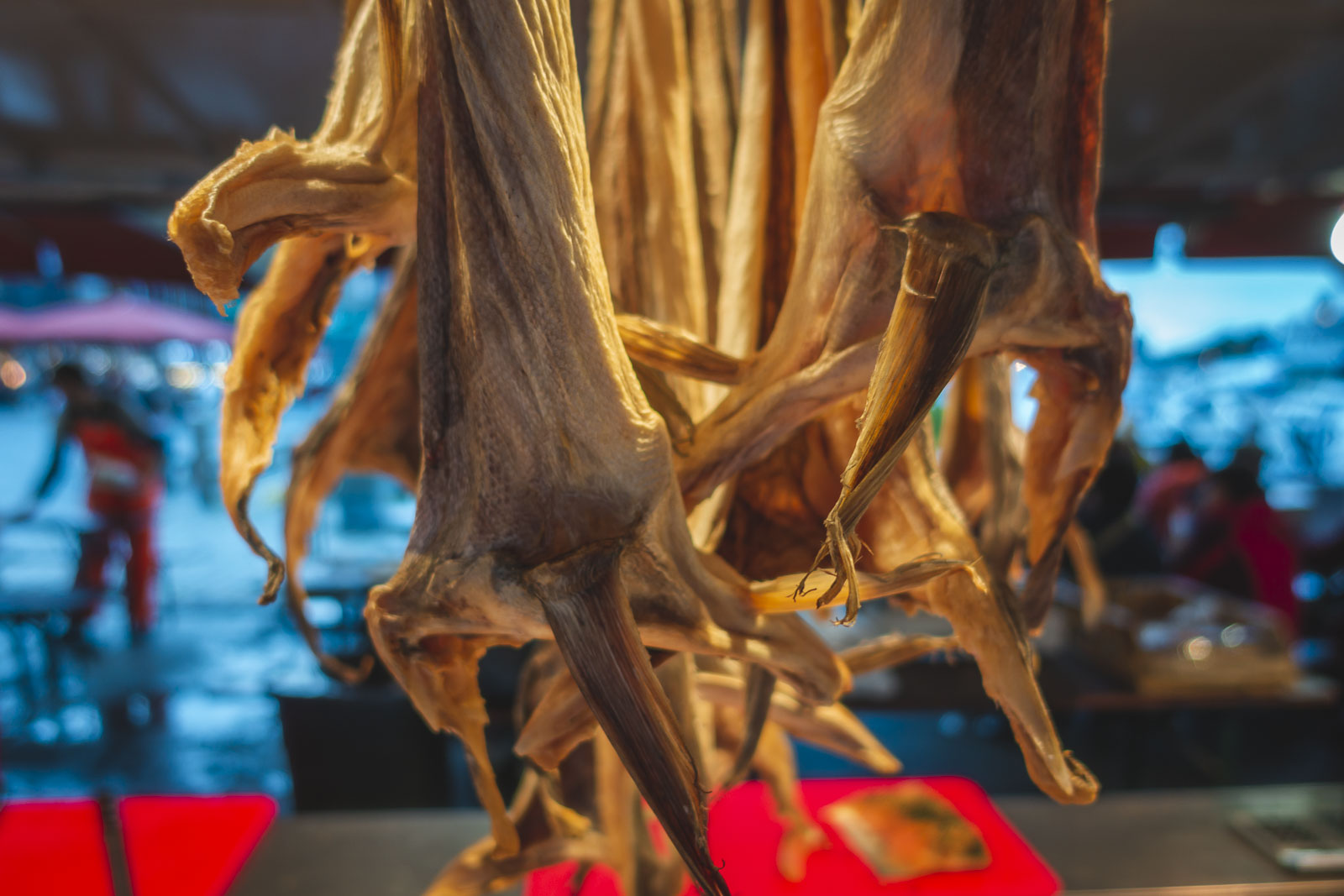
One thing we can say about the Norwegian diet is that it is definitely unique, encompassing typical food habits such as breakfast, packed lunch, dinner, and traditional desserts. With traditions handed down from the Vikings utilizing fresh fish, foraged berries, farmed lamb, and Norwegian cheese, there is a wide variety of Norwegian dishes to sample when you visit the country.
1. Farikal – Mutton and Cabbage
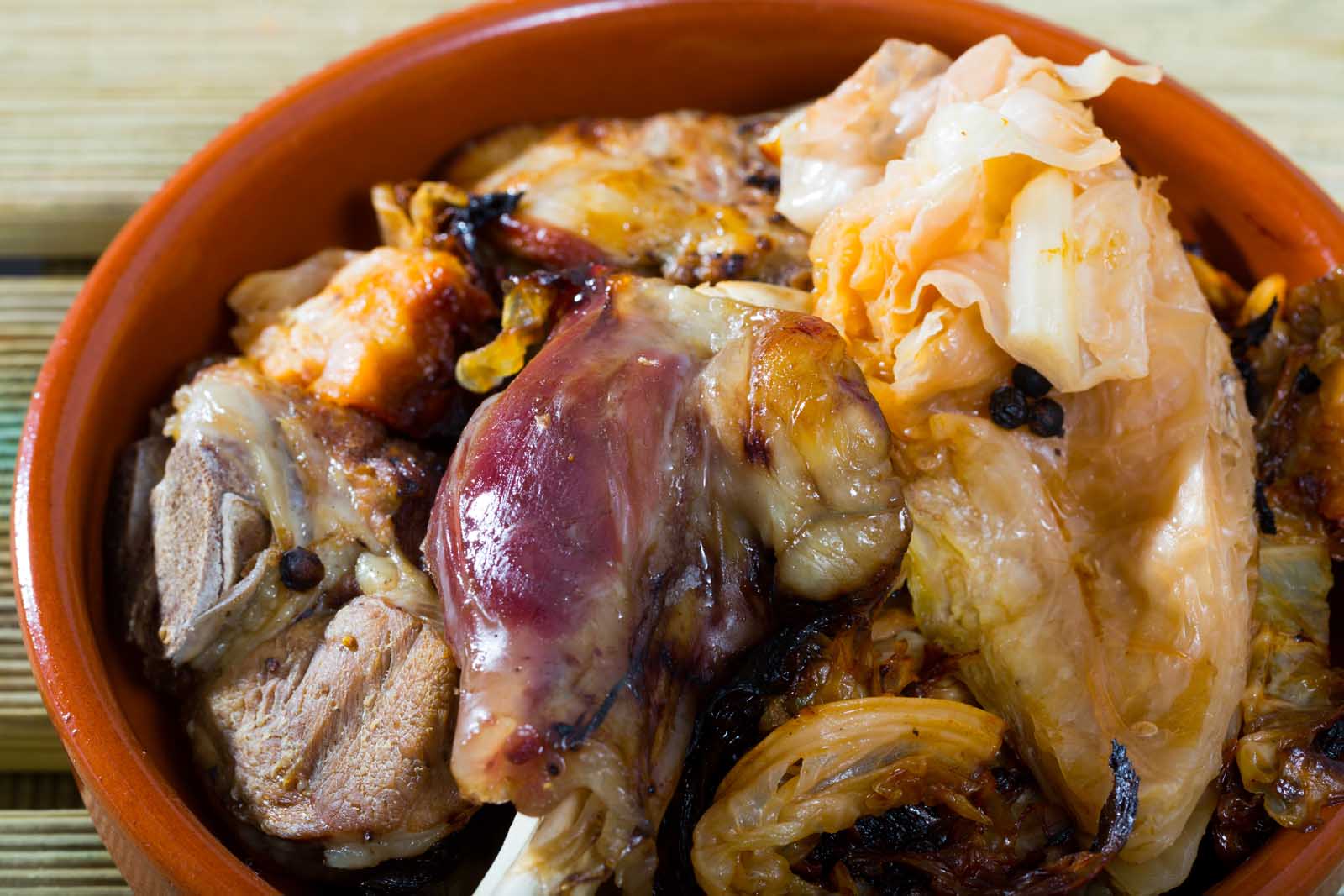
Known as the Norwegian national dish, Farikal is really a simple dish of mutton and cabbage. Like most traditional Norwegian food, it is hearty and tasty.
This meal is quite easy to prepare but can take a little time. It is made by putting bone-in lamb or mutton, cabbage, water and salt, and pepper together in a casserole dish. You slow cook it for a few hours until the cabbage and lamb are tender. When it is ready to eat, serve it with a side of potatoes and you have the perfect traditional Norwegian dish.
If you are in Norway, you will typically find Farikal served during the autumn and winter months. It is a perfect dish to warm your bones.
2. Brunost – Brown Cheese
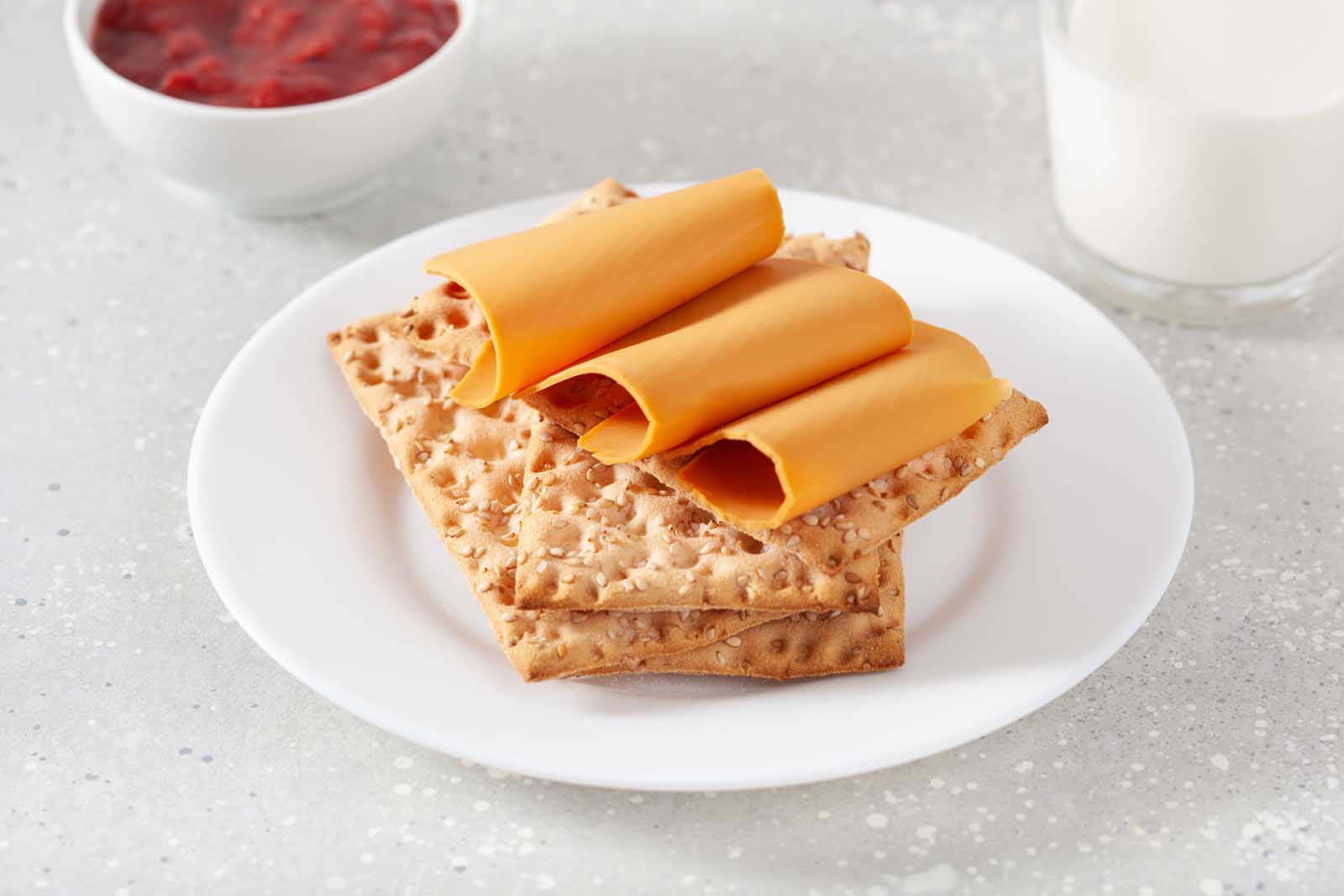
Brunost is a love-it-or-hate-it sort of food. It’s really unique, which is the main reason we’ve added it to this list and a staple in the Norwegian fridge. Brunost is a type of creamy cheese, usually made with cow’s milk but can also be made with cream or goat’s milk.
There are two reasons why Brunost splits opinion: the taste and the texture. First of all, it’s a sweet, caramelized cheese that’s not savory at all. It’s a little tangy and unusual, but if you like it, then you’ll be a lifelong fan. The texture is very creamy, which we think is brilliant. But it can get stuck a little in your teeth, which isn’t always ideal.
If you’re trying brunost, make sure to buy a traditional Norwegian cheese slicer to go with it! You’ll find these in every Norwegian’s kitchen drawer, and it’s a great way to slice these creamier cheeses without fuss.
3. Vafler – Waffles
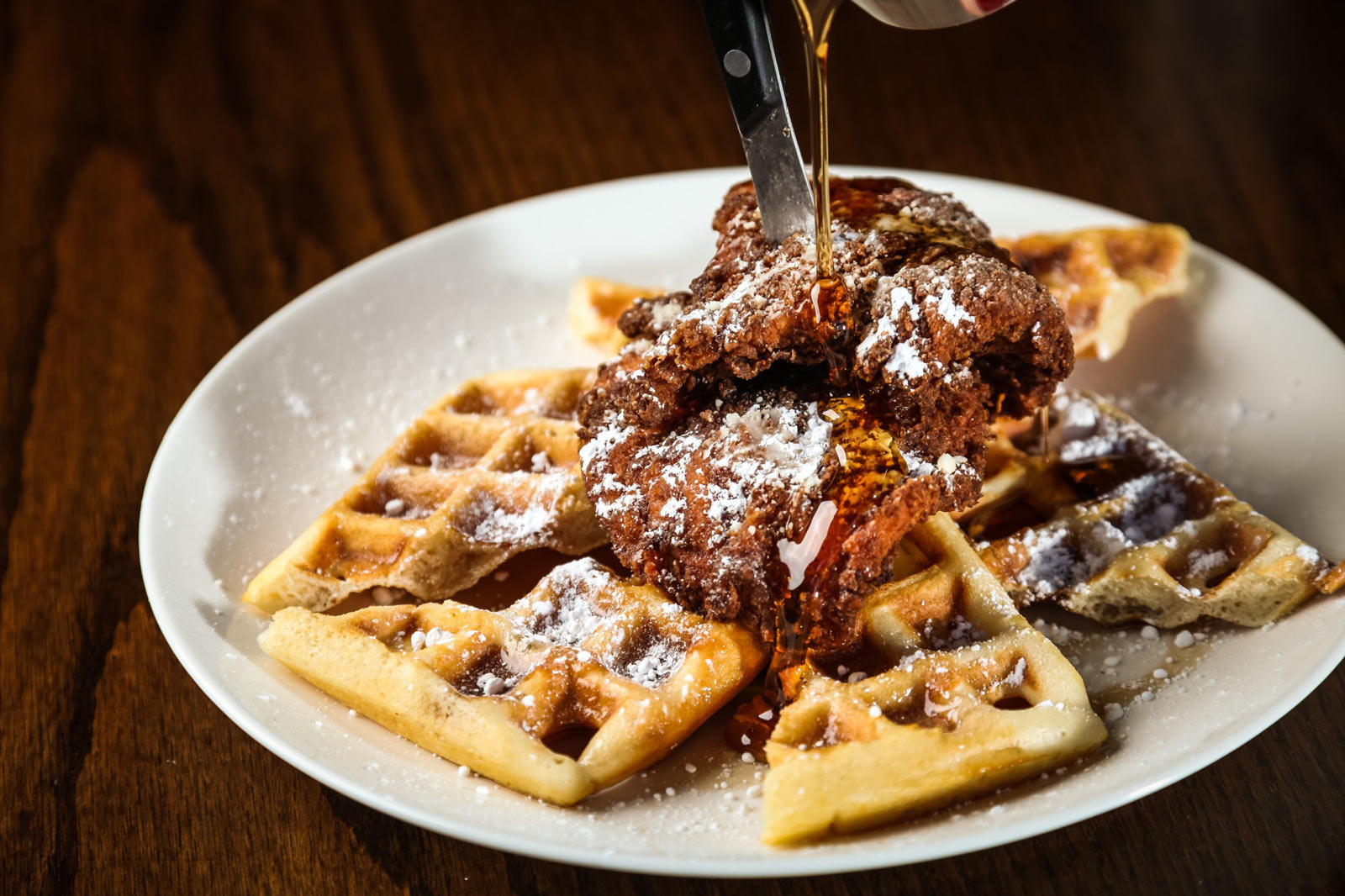
You can’t go to Norway without having a waffle. These sweet treats are a highlight of the country’s cuisine, though of course not as unusual as brunost. But Norway does seem to love them more than anywhere else (at least in our opinion).
It’s traditional to receive your waffles in the shape of a heart, and they’ve been served this way for over 150 years. Usually, you’ll have one large waffle made out of many hearts, which can be torn off and enjoyed, typically with jam.
You might be thinking, but I’ve tried a waffle; this is nothing new! But no one does waffles like the Norwegians. Thin, fluffy, and slightly crisp, they’re different from the waffles in the US and enjoyed by many people around the country every day.
4. Smalahove – Sheep’s Head
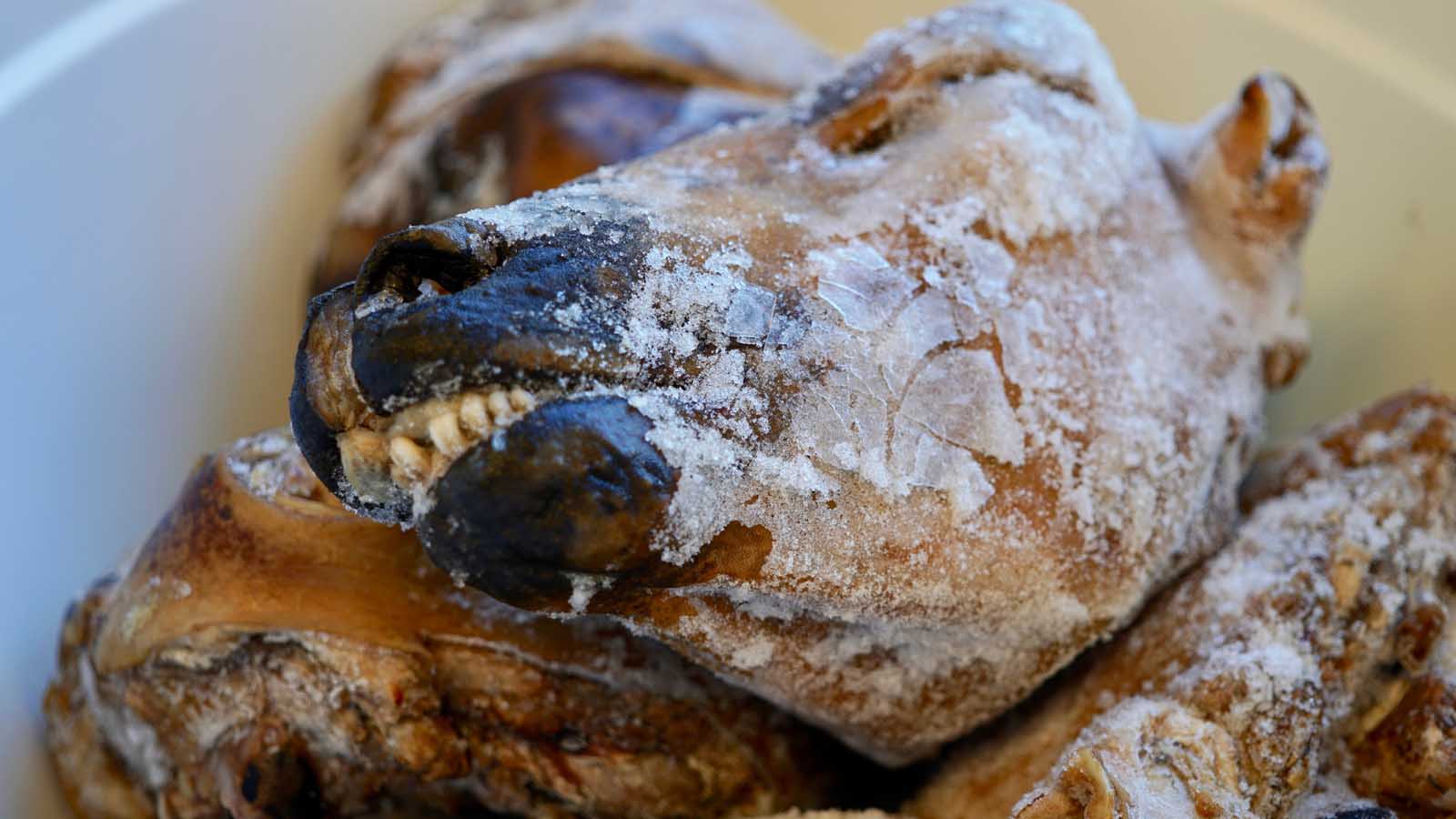
Okay, here’s a traditional Norwegian food that isn’t going to be to everyone’s taste. Even in Norway, its popularity is dying out, but it’s still a traditional dish in this Scandinavian country.
Sheep’s head is exactly what it says on the tin. Half of the head of a sheep is cooked at low heat for a long time before being served with vegetables and potatoes. If you’re squeamish, you might want to skip, but the most delicious parts of the head are apparently the tongue and the eye!
Smalahove has been eaten for centuries and originated in a time when the wasting of part of an animal wasn’t even considered. If you want to try it in Norway now, your best bet is to head to a small village around Christmas time, where you’ll probably find it still on the menu!
5. Lapskaus – Stew
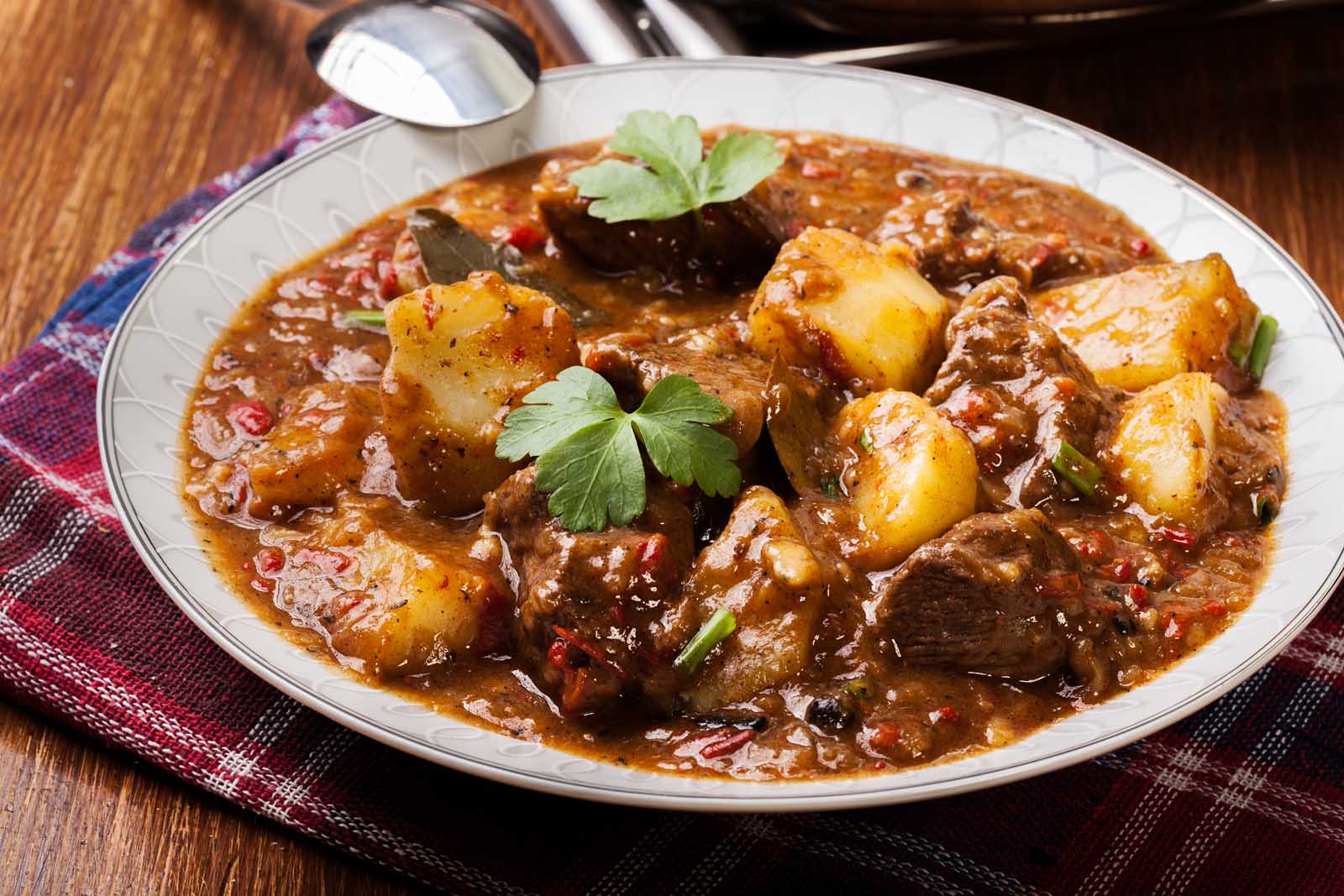
Norway has been enjoying Lapskaus since the 1800s (though it actually came from Germany) and, as Norwegian foods go, it’s a bit more mainstream than a sheep’s head. You’ll find lapskaus being served up in homes across the country throughout the year, and it’s a hearty meal that’ll certainly keep away the cold.
The traditional stew is made with beef, along with vegetables like leeks, potatoes, swede, and carrots. These are all added to one pot to create a hot, delicious stew. We recommend the dark variety of lapskaus which is made with a brun saus (brown sauce, a type of gravy) base for added flavor.
6. Kjøttkaker – Meatballs
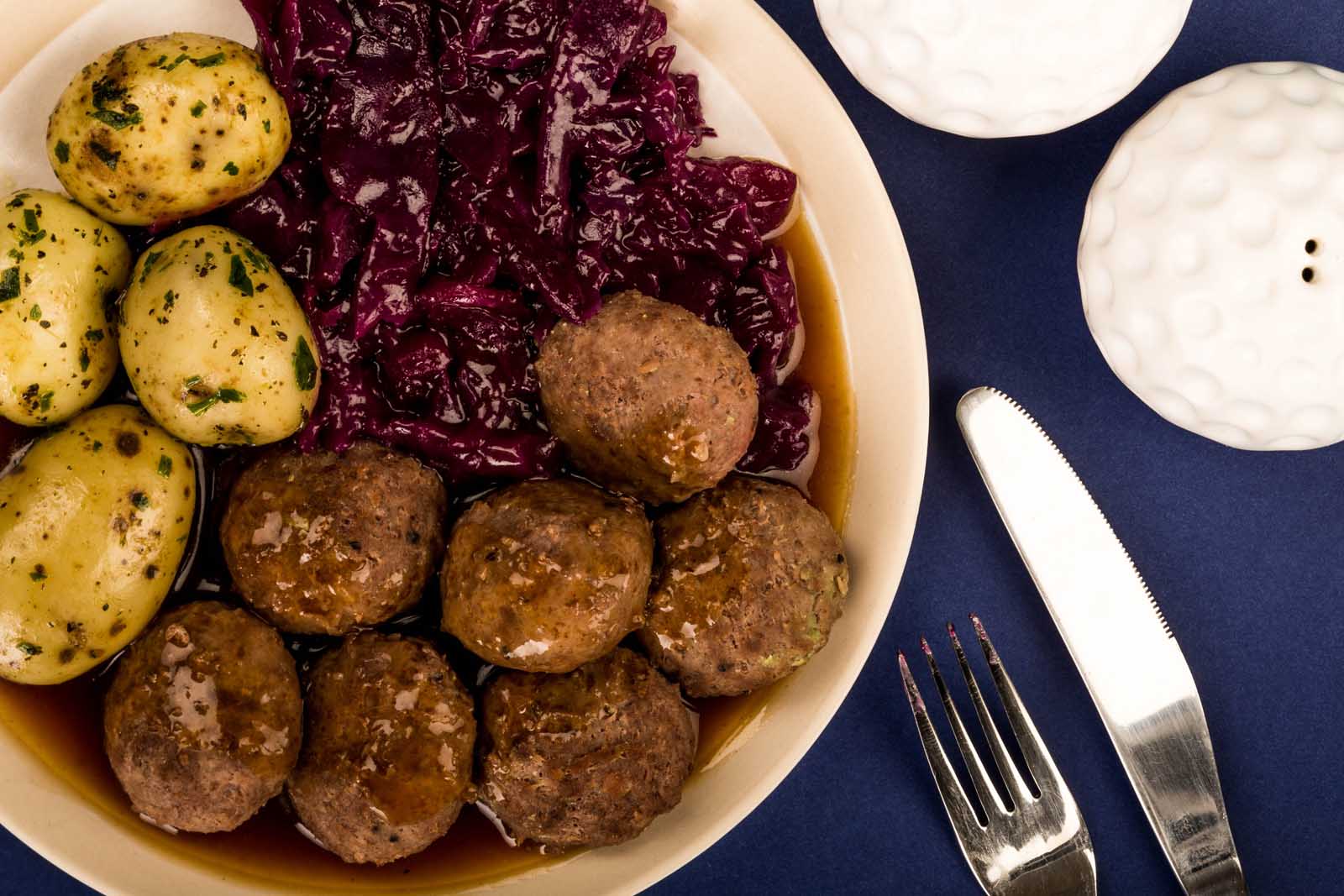
How could we talk about the foods of Norway without mentioning Norwegian meatballs? Scandinavia as a whole is world-famous for its tasty meatballs, as any trip to Ikea will prove!
However, kjøttkaker, or Norwegian meatballs, is Norway’s own take on the meatball. It’s made with minced beef and spices, like ginger, pepper, and nutmeg, giving it a distinctive seasoning. Traditionally, they are served with gravy, boiled potatoes, and lingonberry sauce. It’s a classic that every Norwegian longs for when abroad, and they’re just as delicious as they sound!
7. Trollkrem – Lingonberry Cream
Norway’s myth of trolls is one that has a long and famous history, and it’s still very much alive today. Head into any Norwegian souvenir store and you’ll find row upon row of troll-themed goods ready for you to take home! Children are often told stories of the trolls, too, and it’s a large part of their culture.
That makes Trollkrem a very cultural dessert. Slightly softer than meringues, it’s made from whipped egg whites, sugar, vanilla sugar, and lingonberries. The berries give it a gorgeous purple color that makes a real showstopper on a table, perfect for impressing guests at your next dinner party.
8. Pinnekjøtt – Dried Lamb Ribs
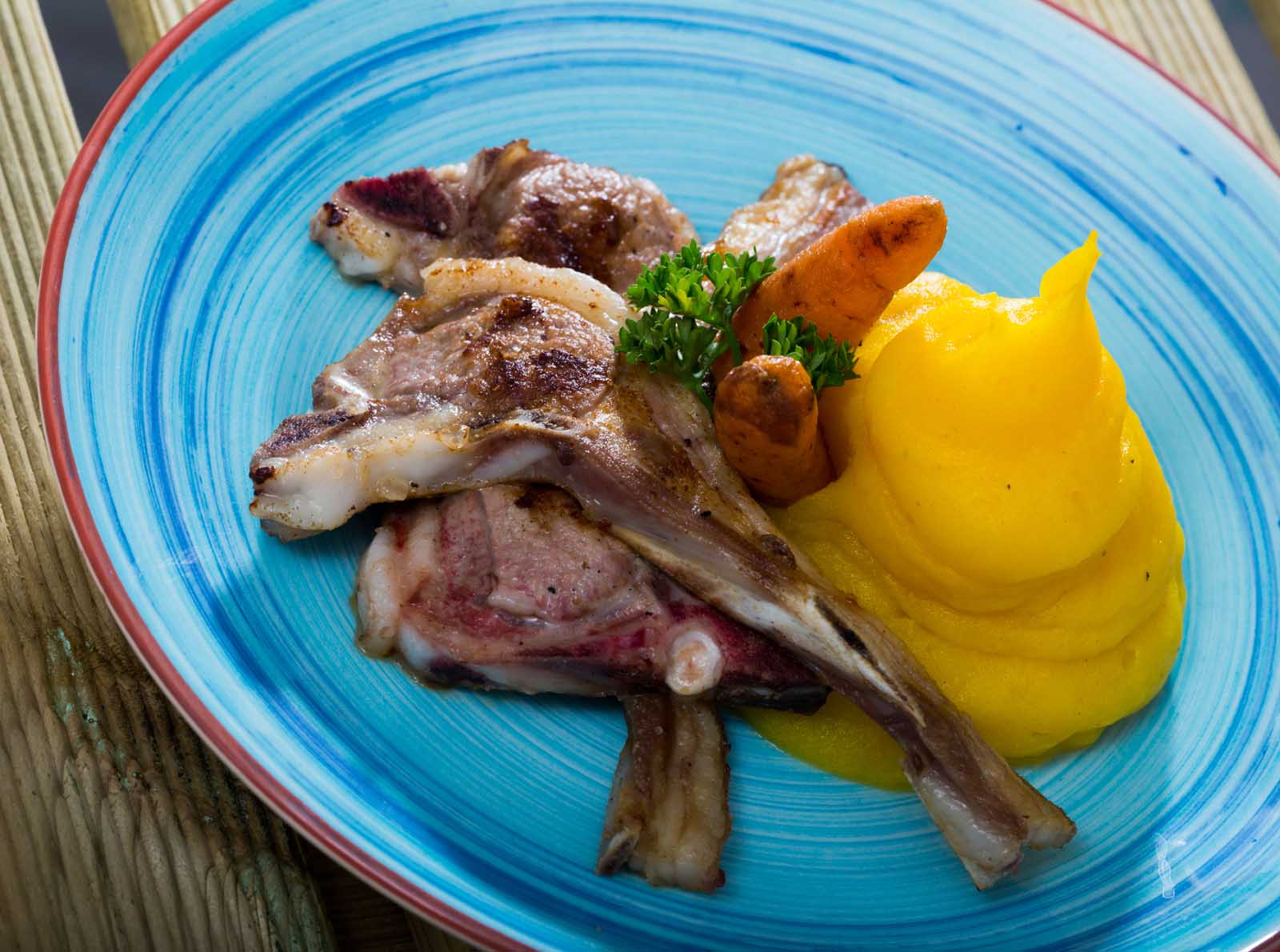
Pinnekjøtt, like Medisterkaker, is a dish usually served around Christmas time. In fact, it’s most common on Christmas Eve (24th) which is Norway’s main event over Christmas. The family gathers around for a large meal in the evening to celebrate the festive period, and you can almost guarantee that pinnekjøtt will be on the table!
These are basically dried lamb ribs. They’re time-consuming to prepare, hence why they’re not eaten too often. Traditional pinnekjøtt is salted, smoked, and dried for thirty days before it’s ready to eat, leaving the meat incredibly flavorsome.
To get your lamb ribs just right, soak them for around thirty hours before eating, and steam them for three hours. This will bring all the juice and tenderness right back for meat that melts in the mouth. Give them a go if you’re in Norway around the holidays and see what you think!
9. Klemmeost – Squeezy Cheese
Another cheesy item on the Norwegian menu is Klemmeost. This is a type of super-soft cheese that can literally be squeezed out of a tube onto bread, and it’s incredibly popular for Norwegian breakfasts and lunches. The cheese is usually flavored with other ingredients, like bacon or ham and, in more recent years, tomato or pepper for vegetarians.
Klemmeost is a much newer food than others on this menu, but it is a staple we recommend nonetheless. If you’re visiting Norway, head to a supermarket and pick up a tube!
10. Raspeball – Potato Dumpling
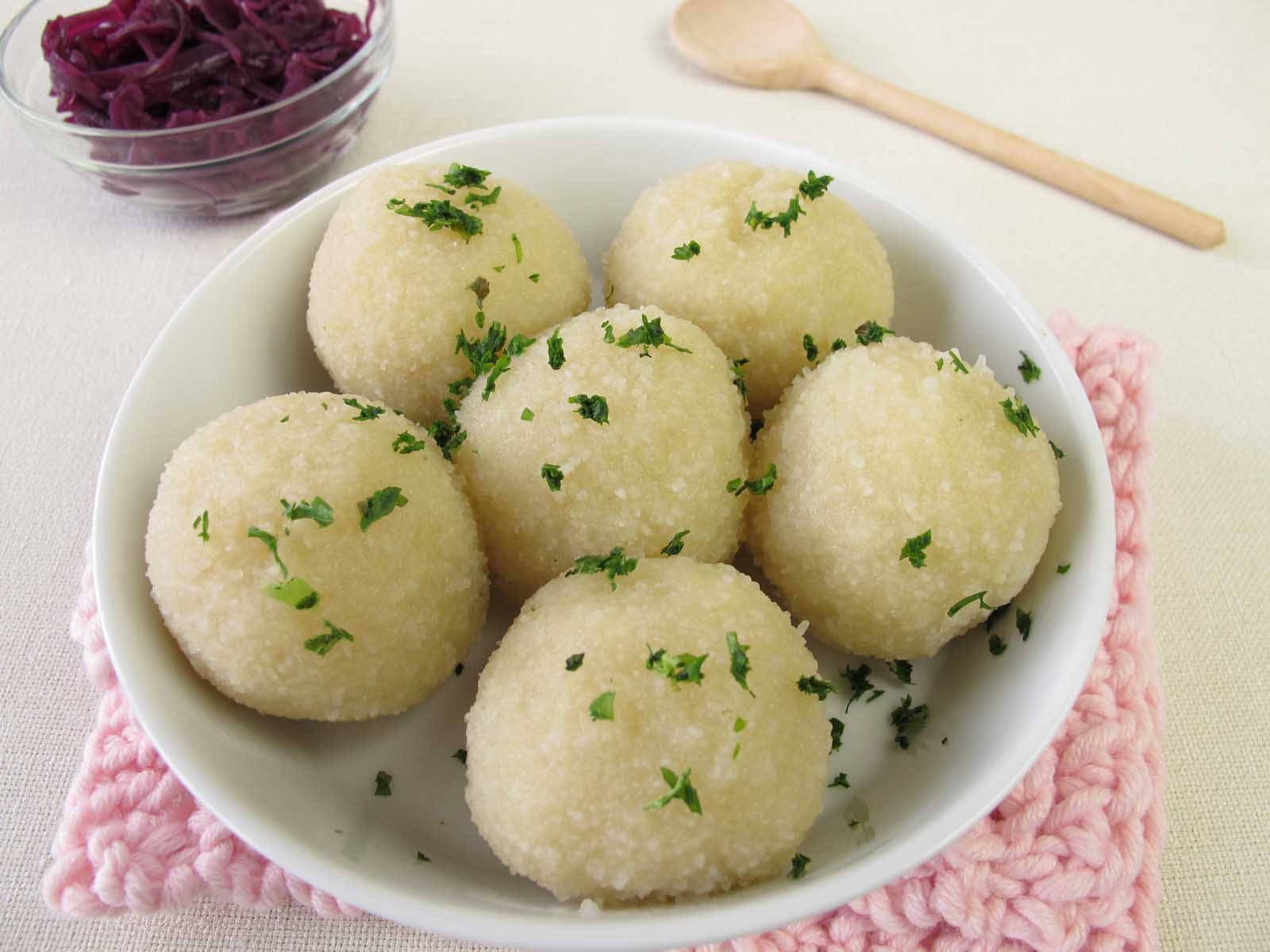
Norway loves potatoes. With every traditional meat dish on this list, you’ll most commonly find it served with some type of potato. They love them almost as much as they love brunost!
The Raspeball is a sort of potato dumpling, and it actually has a whole heap of names you might hear it called, including:
- Klubb
- Potetball
- Kompe
- Komle
That’s just a taste of the many names it goes by! The recipe can also vary slightly from town to town, but in general, it’s made with flour and well-boiled potatoes that are mashed together to create a ball of starchy goodness. It’s actually traditional to serve Raspeball only on Thursday in Norway, though nowadays you’ll see it served up many nights of the week.
11. Rømmegrøt – Sour Cream Porridge
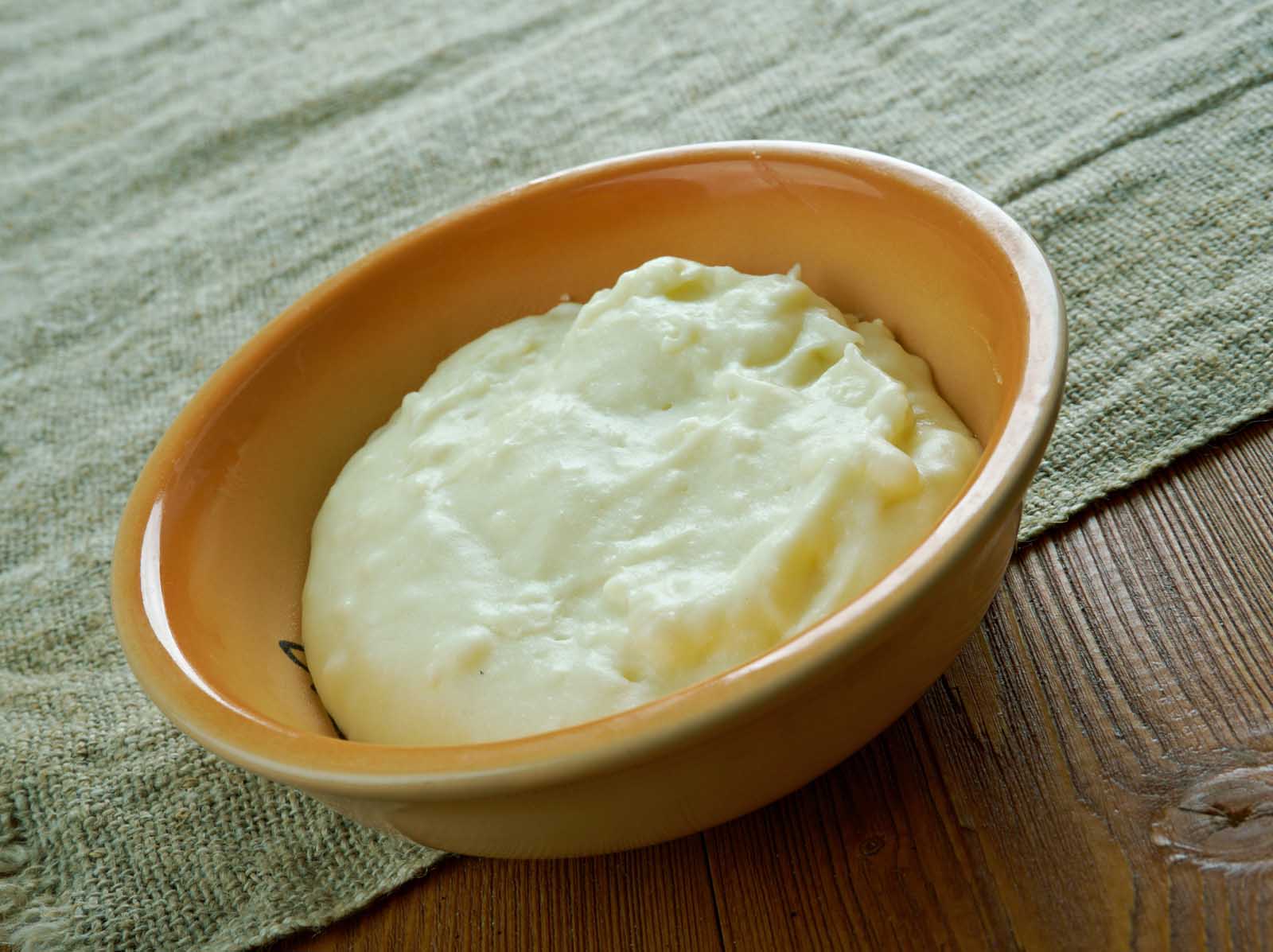
This is one of the simplest Norwegian dishes but absolutely delicious. It’s commonly served during the summer as a lighter meal, although you can find it being dished up throughout the year.
The basic recipe for rømmegrøt consists of sour cream, milk, salt, and flour. These are boiled together until super thick and creamy. As with so many traditional staple dishes, each family has its own secrets and special ingredients they add to make their rømmegrøt even tastier, so if you can try a homemade version then definitely do!
Because the name is translated to sour cream porridge, you might think this is served with jam or honey. But it’s actually completely savory and usually accompanies cured meats or boiled trout, making it more like a mashed potato alternative.
12. Fiskeboller i Hvit Saus – Fish Balls With Béchamel Sauce
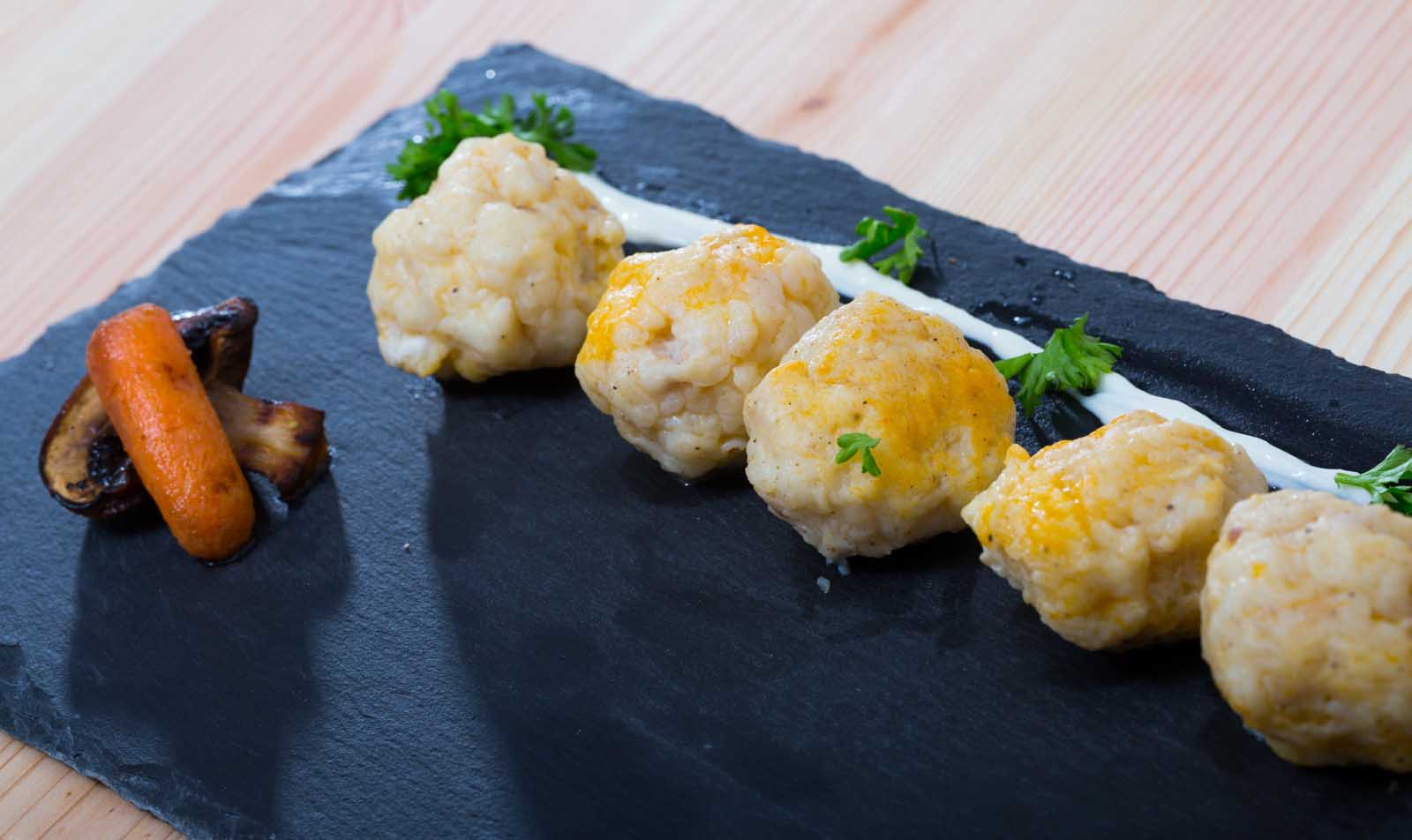
This literally translates to fish balls (or buns) with white sauce, but it is a béchamel sauce.
This dish came about in the early 1900s when a brand called Vesteraalen began producing the fish balls in cans. Ever since they’ve been a real favorite among Norwegians and have become a traditional dish! They can also be made from scratch using a blend of cod and haddock, milk, eggs, and cornflour.
They’re very similar to meatballs but simply made with fish instead. They’re then served with—you guessed it!—potatoes and vegetables, along with a creamy and delicious béchamel sauce. Delicious, easy to make, and healthy, it’s a great choice if you’re looking to try some of the best food from Norway.
13. Tilslørte Bondepiker – Layered Dessert
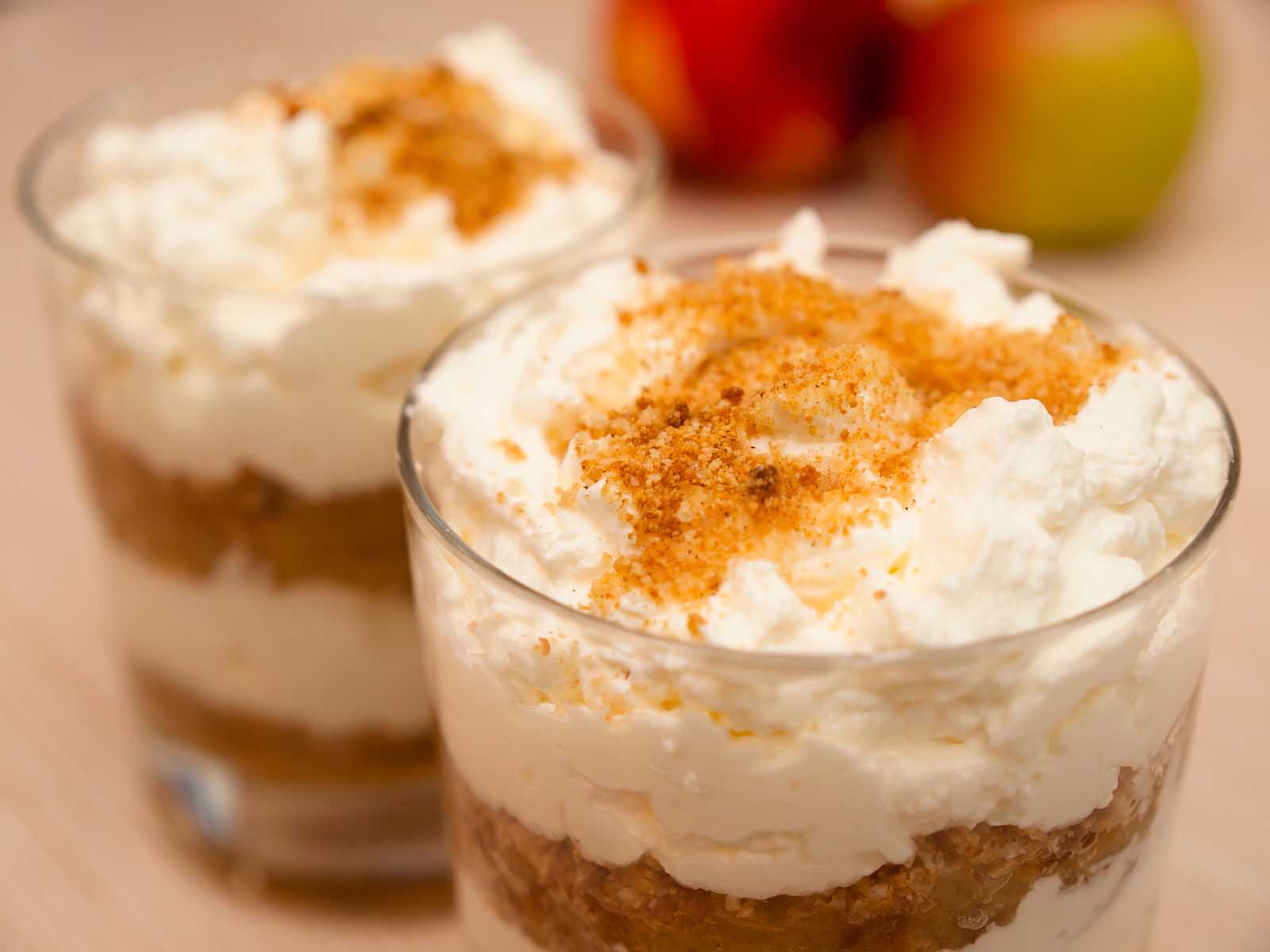
Tilslørte Bondepiker is a sweet and tasty dessert that’s very common in Norway. According to legend, a Norwegian poet and philologist were once served the dish by a peasant girl in the 1800s. He fell in love with the girl instantly and referenced her when speaking about the dish – Tilslørte Bondepiker roughly translates to veiled peasant girls!
The dessert is normally made in a glass bowl so that all the layers can be appreciated. It’s made up of whipped cream, apple sauce, and breadcrumbs that have been roasted in plenty of sugar before serving. It’s best eaten right away so that the breadcrumbs don’t become soggy.
14. Rakfisk – Fermented Fish
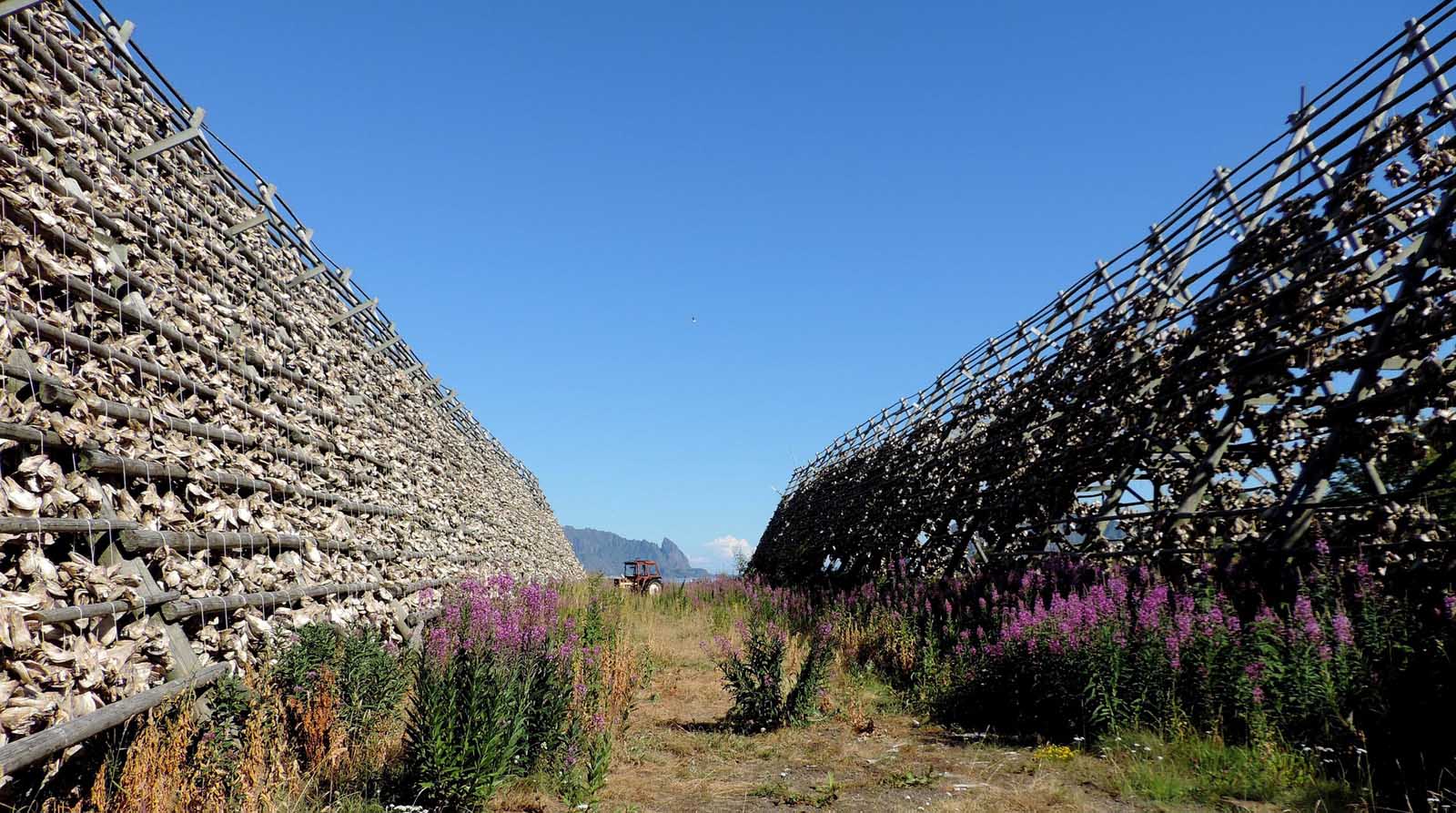
Don’t be put off by the pungent scent of rakfisk! It may smell pretty overwhelming, but it’s a delicious dish worth trying if you’re in Norway.
Rakfisk is a type of fermented freshwater trout, that’s caught, salted, layered in barrels, and covered with branches. It’s then left for many months to ferment so that the taste can come into its own.
15. Bergensk Fiskesuppe – Bergen Fish Soup
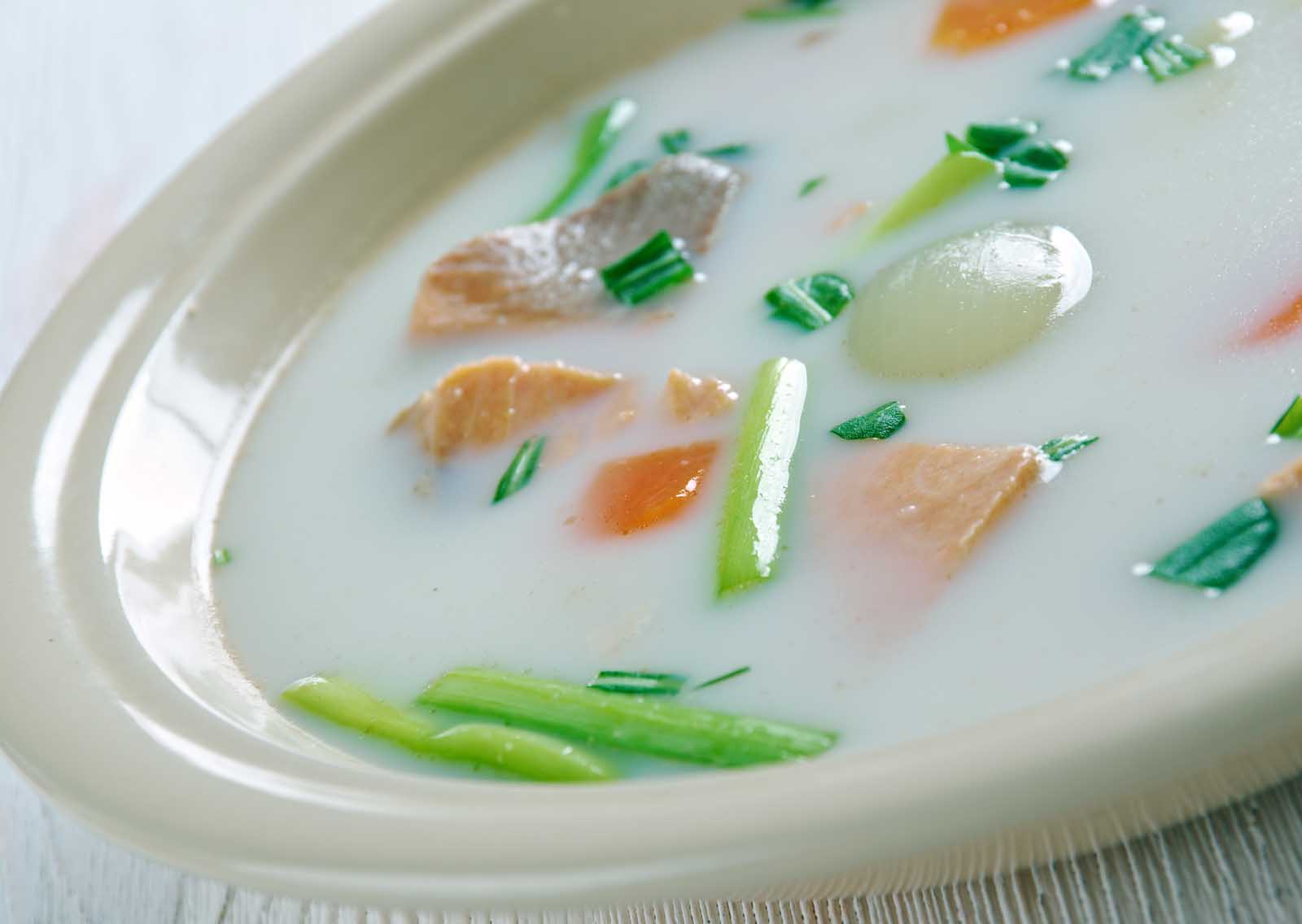
Originating from Bergen, Bergensk Fiskesuppe is now enjoyed all over Norway and embraces the country’s love for fish perfectly. Traditionally, it’s made from a very light fish stock that contains local small pollock.
Double cream makes for a silky and thick consistency, while expertly crafted fish balls add texture and substance. Sour cream, vinegar, and egg yolk are added right before serving for a tangy, rich flavor. If you try this, get ready to think about it every day for the rest of your life.
16. Medisterkaker – Pork Patties
There isn’t a direct translation for the term Medisterkaker and pork patty doesn’t really do it any favors. So, we’re just going to have to go ahead and describe this dish instead.
Medisterkaker is usually served as an evening meal with potatoes and vegetables. They’re somewhere between a small burger and a meatball in appearance, but in flavor and texture are something else entirely!
The pork usually used to make these balls is blended with flour, salt, eggs, black pepper, and oil. But where they really get interesting is with the addition of nutmeg and ginger, adding a sweetly spiced flavor to the meat that isn’t common in other countries. Soft, fairly easy to make, and typically eaten at Christmas, they’re a must-try meat dish.
What are traditional Norwegian foods?
Traditional Norwegian foods include hearty dishes such as rakfisk, a fermented fish, and lutefisk, dried fish reconstituted in lye. Other staples are kjøttkaker, meatballs often served with gravy and potatoes, and the classic cheese brunost, a caramelized brown cheese.
Pickled herring is also a renowned and in-demand fish in Norwegian cuisine, often served at breakfast, utilized in lunch salads, combined with lefse for savory fillings, and is a popular pick for dining in Norway.
What is the national dish of Norway?
The national dish of Norway is fårikål, a simple yet flavorful stew made of lamb or mutton and cabbage, seasoned with black peppercorns. It is traditionally served with boiled potatoes, especially in the autumn when the lamb is most tender.
What is a typical Norwegian lunch?
A typical Norwegian lunch, known as “matpakke,” often consists of open-faced sandwiches made with whole-grain bread topped with cold cuts, cheese, or spreads. This simple and practical meal is usually accompanied by milk or coffee and often packed in a lunchbox for work or school.
What do Norwegians eat in a typical day?
Norwegians typically start their day with a breakfast of whole-grain bread, cheese, cold cuts, and coffee. Smoked salmon is a versatile ingredient often used in savory lefse fillings, paired with dill as a traditional Norwegian dish, or in a fresh salad with sliced cucumber and capers. Lunch is usually a packed matpakke of open-faced sandwiches, while dinner often features hearty dishes like fish, meat, potatoes, and vegetables, followed by a light evening meal or leftovers.
Discover Norwegian Food and More
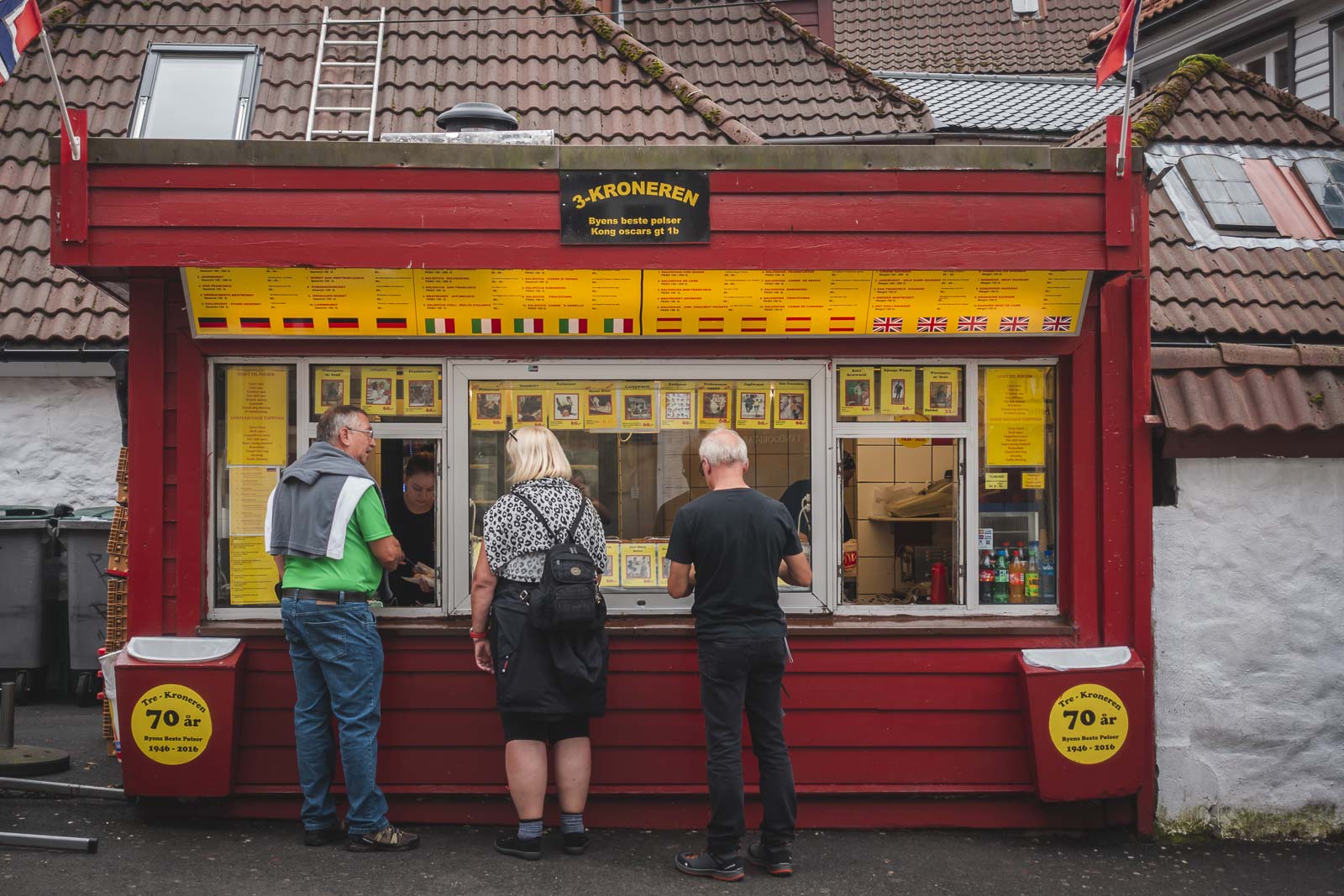
Norway certainly has its fair share of unique traditional dishes, and that was one of the things we really loved about this country. The history of this country and its geographical location has really made for some creative dishes and you have to make sure that you try a few of them the next time you visit this beautiful country.




Great article!
Just a comment on the pinnekjøtt and rømmegrøt (sourcream porridge).
Pinnekjøtt is divided into smoked and non-smoked. The smoked version is usually served in the Voss region (1,25 hour train drive north east of Bergen), while the non-smoked pinnekjøtt is quite common everywhere else (especially in the north-west, the region called Møre & Romsdal).
Rømmegrøt is not considered a light dish, nor a side dish. As you can imagine, being made with full fat sourcream, flour and whole milk, it’s quite heavy. Traditionally, the everyday food was quite low in fat, so the high-in-fat dishes like rømmegrøt was saved for the big occasions. Like a wedding, christening, confirmation, 17th of May (national day) someone’s 50 years anniversary etc.
It’s served with cinnamon and sugar, plus the melted butter earlier separated from the porridge poured over. On the side you may have cured meat (ham, lamb – fenalår), or even dried fish as mentioned in the article. There’s also regional differences; some will have eggs and/or raisins on top as well.
For a more everyday alternative, check out risengrynsgrøt, rice porridge, or byggrynsgrøt, barley porridge.
Keep up the good work!
Interesting list of Norwegian foods but where is the Leafse? Every cook knows how to make this potato and flour flatbread that is buttered and spread with cinnamon and sugar.